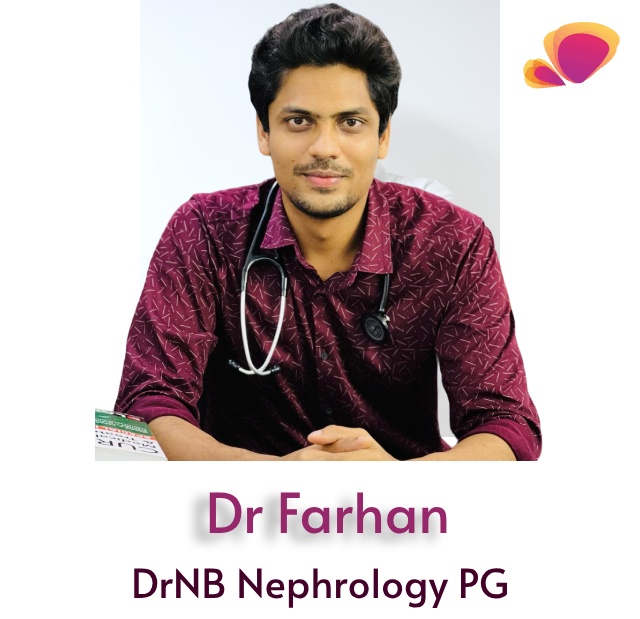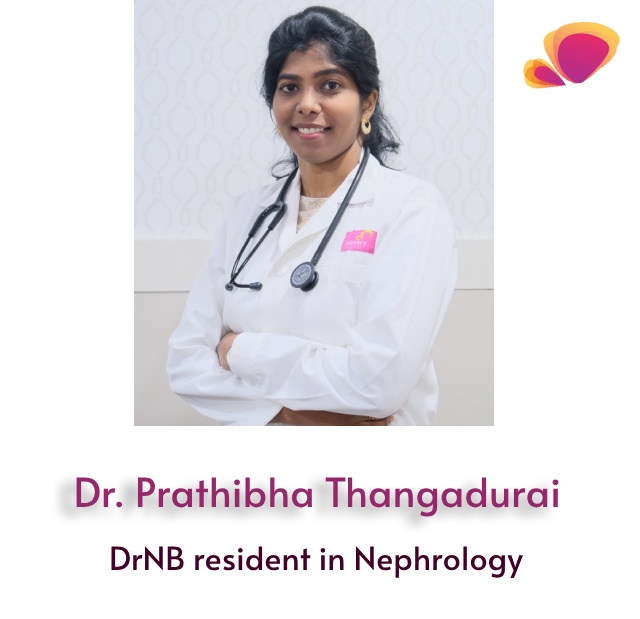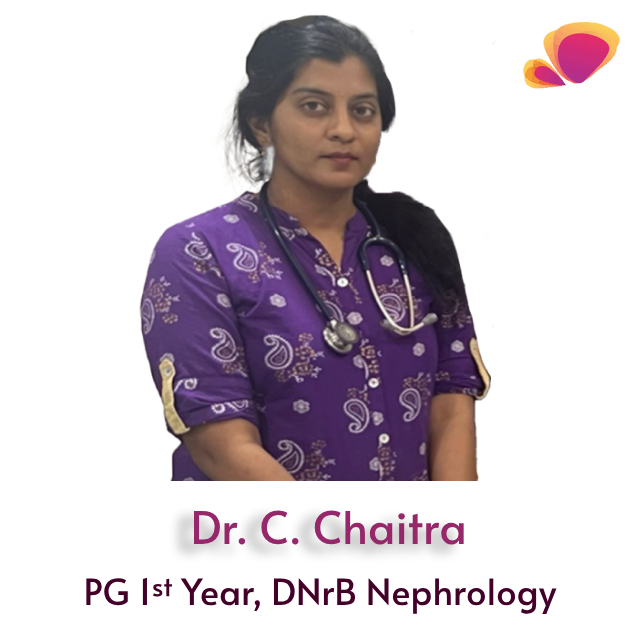Message from Team IMA Chennai Kauvery Alwarpet Branch

Dear friends,
Greetings from IMA Kauvery.
As we all know kidneys play a major role in electrolyte balance, maintaining blood pressure and urine excretion.
Let us spread more awareness to save our kidneys.
This edition helps us to get enlightened about kidney diseases.
Thanks to our Nephrology department for their contributions.
Yours in IMA service,
Dr S Sivaram Kannan
President

As we all know Nephrology Medicine is a super specialty field.
Kauvery having its own academic program in DrNB has 3 postgraduates to its pride.
A wide range of challenging cases from cystitis to transplants are encountered here with successful outcome.
A separate dialysis unit with a state of art infrastructure is also here.
This gives our postgraduates the best academic exposure.
We thank them and their mentors for this edition.
Long live IMA.
Yours in IMA service,
Dr. Bhuvaneshwari Rajendran
Secretary.

Dear friends
Happy to meet you all with the next edition of our Journal.
This issue is contributed by the post graduate students of Nephrology Department.
Thanks to all the postgraduates and the Editorial and Branding teams.
With best regards
Dr. R. Balasubramaniyam
Editor

A Case Of Cardio-renal Syndrome Benefitting From Ultrafiltration Using Peritoneal Dialysis
Abstract:
Cardiorenal syndrome (CRS) presents a challenging interplay of cardiovascular and renal pathologies and is particularly prevalent in the concurrent development of congestive heart failure (CHF) and chronic kidney disease (CKD). This case report highlights the successful management of CRS type 2 in a 70-year-old male with severe ischaemic cardiomyopathy complicating chronic kidney disease. The patient’s deteriorating condition prompted a nuanced approach that incorporated peritoneal dialysis (PD) as a pivotal element in addressing haemodynamic instability and acute-on-chronic kidney disease.

Acute onset segmental intra renal Absent or Reversal of diastolic flow in renal allografts-A nightmare for nephrologists!
Introduction:
Doppler Ultrasound (DUPLEX) has proven to be a useful non-invasive tool for monitoring the renal allograft function. In the healthy allograft, low renal vascular resistance allows antegrade blood flow throughout the cardiac cycle. In the dysfunctional kidney, high intrarenal vascular resistance can cause decrease / absent diastolic flow. Reversed diastolic flow represents the extreme end point of high vascular resistance. Although relatively rare, reversed diastolic flow demands immediate attention because it portends poor outcomes, with 33%–55% of allografts lost. Here we describe our experience with 2 such cases and management.

Association Of CYP3A5 Genotyping And C0/D Levels In Post Renal Transplant Diabetes Mellitus
Introduction:
Post transplant diabetes mellitus (PTDM) is known to occur in 4-25% of renal transplant patients, with 34.7% occurring in the first year, 46.9% and 56.2% in the 3rd and 5th year follow ups, respectively. Various factors contribute to the development of PTDM including the diabetogenic immunosuppressive medications (Corticosteroids, tacrolimus, etc), Hepatitis C virus infection, etc. PTDM has been shown to be a very strong independent predictor of mortality and graft failure.
Tacrolimus is metabolised by CYP3A5 enzyme and contributes to its bioavailabilty.

Post Renal Transplant Denovo Membranous Nephropathy
Background:
Glomerulonephritis (GN) continues to be one of the main causes of end stage renal disease with an incidence of 10.5% to 38%.[1,2] Post transplant GN can be classified as recurrent, de novo and very rarely donor derived. A recurrent or de novo GN in the renal allograft is an important cause of allograft failure following renal transplantation.[3]
De novo/new-onset disease in a renal transplant is defined as the occurrence of a newly acquired non-rejection related pathologic process affecting the allograft, which differs from the recipient’s original kidney disease. The incidence of de novo GN is up to 10% at 15 years [4]

Tonsillectomy for recurrent IgA nephropathy?
Case report:
A 22-year-old college student, known Wilm’s tumour – status post right nephrectomy at 2 years of age, known hypertensive for 2 years, developed chronic kidney disease secondary to IgA nephropathy and was on maintenance hemodialysis thrice weekly since 2022. He underwent live related renal transplant in November 2022 having mother as his donor. He was on triple immunosuppressives following transplant. His serum creatinine was 1.6 mg/dL on discharge, and he was maintaining the same for the next 6 months.
In May 2023, his serum creatinine elevated to 1.98 mg/dL and renal biopsy was done.

Otorhinolaryngology Manifestations In Chronic Kidney Disease
Abstract:
Chronic renal disease has been documented as a cause for various systemic disorders with various degree of manifestations.one such consequence is ear and neck manifestations. 1 To discuss these manifestations let’s review with this case report. We are discussing about a 79-year-old gentleman who had gone to multiple hospitals and reviewed with an otorhinolaryngologist for tinnitus, fullness in ear with postural dizziness. He was evaluated further and found to have bilateral moderate sensorineural hearing loss with vestibular hypofunction and chronic kidney disease.


